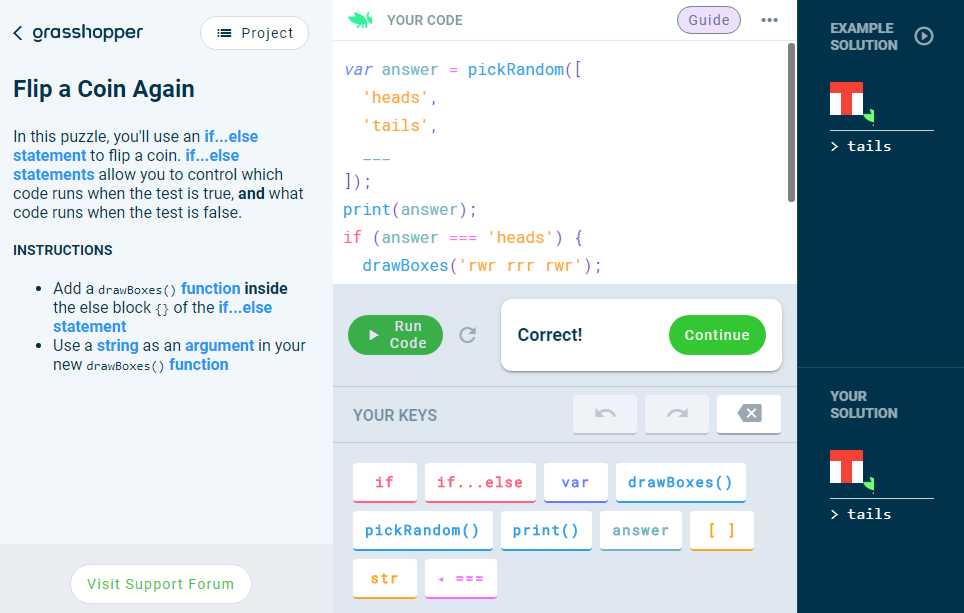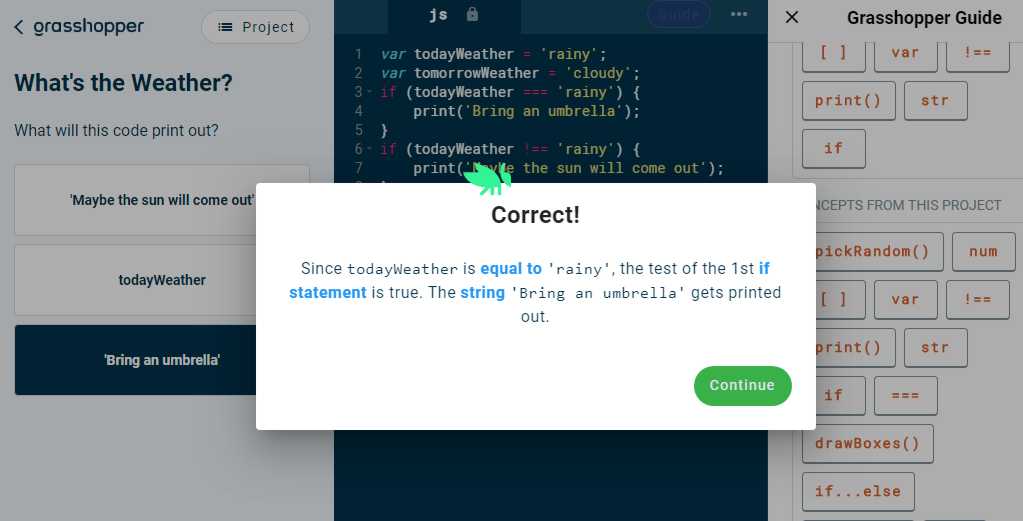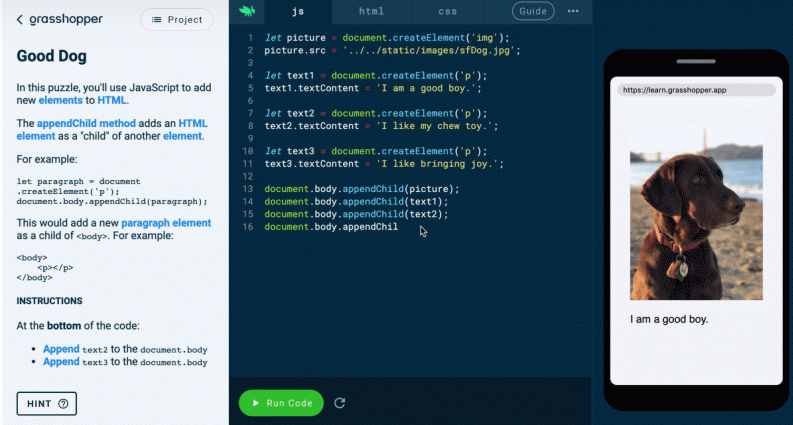| Grasshopper Now On the Desktop |
| Written by Sue Gee | |||
| Friday, 11 October 2019 | |||
|
Part of the Code With Google initiative, Grasshopper is Google's free learn-to-code tool for adults. Since its launch as an Android and iOS app, it has already been used by more than two million people and now there's a desktop version together with additional content. As we reported at its original launch in April 2018, Grasshopper came about as an Area 120 experimental product. Area 120 accepts pitches from Google employees who get to work full-time on their projects is accepted. Grasshopper's team consists of CEO Laura Holmes, a senior product manager at Google who was previously Product Manager on Google Tag; Curriculum Manager Heather Smith; Curriculum Specialists Frankie and Ben and four software engineers Lucas Mullens, Phil Nova, now joined by Kris and Val. So, as you can see, there's a lot of expertise behind this free coding app and this explains the quality of the interface and its popularity - it has a rating of 4.5 on Google Play and the vast majority of ratings are the full 5-stars. According to Laura Holmes on the Google Keyword blog: We created Grasshopper to increase access to coding education and to help prepare people for career opportunities in tech. Aimed at complete beginners, it offers graduated steps, or puzzles, each of which take a matter of a few minutes to complete. For the desktop version, which is free and accessed by your Google account credentials, the screen is split into three vertically. The left panel contains the description of the puzzle and the instructions of what the learner has to do. The middle one displays the code to be completed. In the early lessons this is to be done using drag and drop using a palette referred to as Your Keys at the bottom of the panel. The right panel shows the expected solution at the top and when the learner presses Run Code the result appears lower down. The panel at the right can also display the Grasshopper Guide which outlines the concepts being introduced. As an alternative to constructing new code, some puzzles ask you to read through code and work out what will be output when its run. Whenever you Run Code you are given feedback and the Correct message, accompanied by a shower of green confetti, leads on to the next step. While you can't jump forward through a lesson, you can return to earlier puzzles using the Project button which provides a list of the steps. If you are stuck, there is often a Hint button with snippets of help. If you want more in the way of explanation click Visit Support Forum for a page that provides the aim of the puzzle and a walkthrough of the solution which notes all the new concepts. There is also an example solution which is obfuscated until you choose to reveal it. The desktop version offers four lessons, all introducing JavaScript, which have to be tackled in order. Subsequent lessons are locked until you have completed the previous ones:
When Code.org launched the Hour of Code it was designed to make up for the fact the schools in the United States were not including Computer Science and basic computer coding in the curriculum. It quickly became a global phenomenon and adults who had missed out on coding were keen to join in - and the fact that so much of the content was aimed at young children was something of a barrier. This Google initiative for beginners has content that is much more suitable for adults while still having characteristics that made Hour of Code materials so popular - split down into short chunks, building one step on another, frequent congratulatory messages and a sense of achievement while having fun and experiencing play rather than work. In a matter of a few hours a complete beginner can decide if they want to go further with a coding education. When it was originally launched as an app, which has been expanded with new content over the intervening period, Grasshopper suggests follow-on courses on Coursera, all of which are still recommended:
More InformationRelated ArticlesGrasshopper - An Area 120 App To Teach Coding To be informed about new articles on I Programmer, sign up for our weekly newsletter, subscribe to the RSS feed and follow us on Twitter, Facebook or Linkedin.
Comments
or email your comment to: comments@i-programmer.info
|
|||
| Last Updated ( Friday, 11 October 2019 ) |






